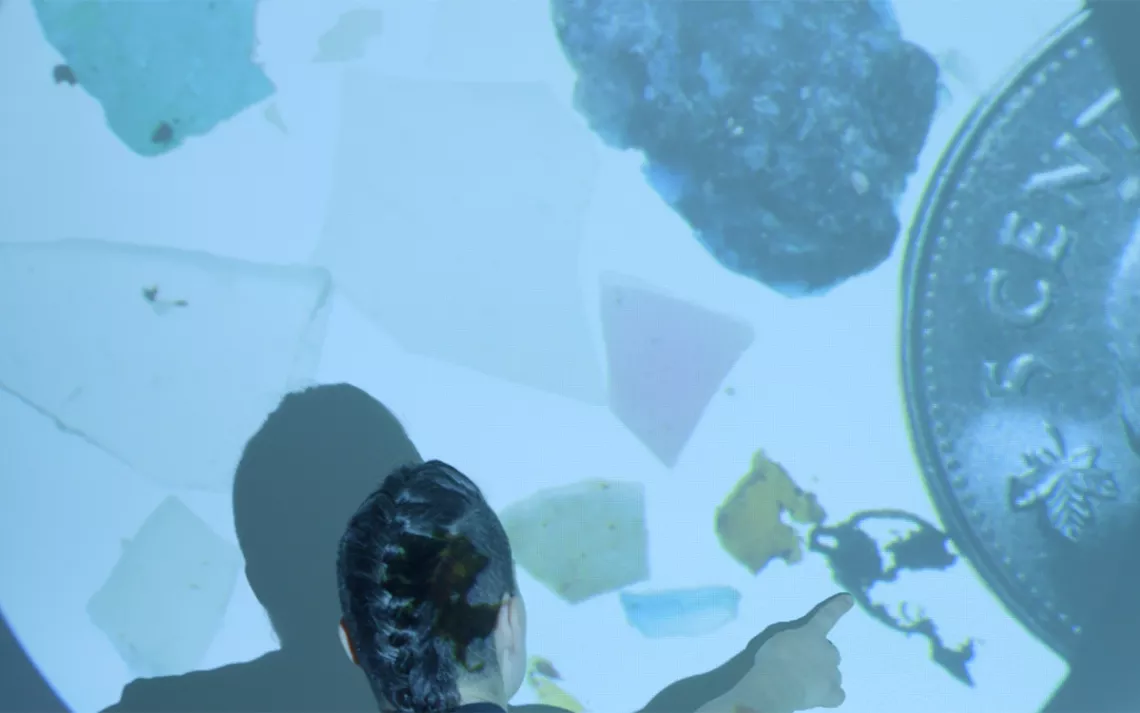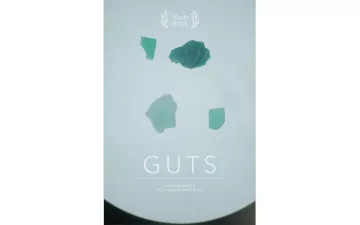A New Look at the “Guts” of the Plastic Pollution Problem
A new documentary takes an anti-colonial, feminist view on pollution


During a sweeping shot of a mountain range overlooking the ocean in Newfoundland, Canada, birds caw but can’t be seen and wind blows through the foliage. These are the traditional ancestral lands of the Beothuk and Mi’kmaq, as well as other Indigenous groups. They are lands being overrun by plastic pollution.
When villagers in the area go out to fish now, they see plastic fragments floating everywhere in their waters.
Guts, a short documentary curated as part of the Atlantic Selects series, follows scientist Max Liboiron and her work at the Civic Laboratory for Environmental Action Research (CLEAR), an anti-colonial, feminist laboratory that researches marine plastic pollution.
Liboiron and her colleagues at CLEAR largely use community-based and citizen-science monitoring to understand the prevalence of microplastics in waters and food webs. CLEAR scientists collect the guts of animals caught for food around Newfoundland to see how much and what kind of plastic is inside.
Since wild-caught food is an important part of the diet in and around Newfoundland, CLEAR’s research on how much plastic different fish ingest becomes especially relevant for residents consuming that fish.
Liboiron and her fellow CLEAR scientists explain the importance of building equity into their practices, which includes directing their scientific outputs toward the needs Indigenous communities have articulated for themselves, and holding community meetings to assess research questions before publishing their findings.
Can science be feminist and anti-colonialist? Isn’t science just science?
“Every time you decide what question to ask or not ask, which counting style you use, which statistics you use, how you frame things, where you publish them, who you work with, where you get funding from . . . all of that is political,” Liboiron says in the film. “Reproducing the status quo is deeply political because the status quo is crappy.”
Liboiron brought equity practices to the making of the film itself. She wanted to collaborate with filmmakers who were immersed in the how and why of the lab’s work, so directors Noah Hutton and Taylor Hess became full lab members—reading the lab’s methodologies and taking part in scientific work and discussions.
“It was a challenge to the way we’re used to doing things: coming in, cameras rolling, observers of phenomena. It was a challenge at times to participate in these discussions, to be doing something that wasn’t obvious for the film,” Hutton says in the film.
At a short 15 minutes, the film is limited in scope and focuses primarily on the scientists and their process, but it does provide insight into a different way of doing science—one that focuses on how to make science accessible to everyone while respecting the needs of the community in which that science is based.
CLEAR scientists like Liboiron are racing to solve a plastic pollution problem that is quickly spinning out of control. The global recycling rate is less than 20 percent, and since China banned the import of contaminated plastic waste in 2018, 111 million metric tons of plastic waste were displaced, on their way to other Southeast Asian countries even as domestic recycling programs in Western countries like the US slowed or shut down altogether.
“The only mode of attack is to deal with the heavy decrease in production of plastics, as opposed to dealing with them after they’ve been created,” Liboiron says. “Your consumer behaviors do not matter. Not on the scale of the problem.”
Plastic can travel huge distances; CLEAR works with beachcombers in Scotland to report when they find fishing tags originating in Canada. The lab also monitors plastics “whenever and wherever we can”—in sediment, in surface waters, and on shorelines. It does this by deploying devices made from cheap, local materials like baby pants so that people anywhere can duplicate it easily to monitor their own waters.
While this monitoring can be used to point to the harm of plastic pollution, Liboiron thinks it’s much more important to focus on the top of the pollution pipe, not the end of it.
“Plastics only come from one place: the plastics and petrochemical industries,” she told Sierra. “Whether we find more or fewer plastics in some areas compared to others, there’s still only one source. You don’t need monitoring to tell you that.”
 The Magazine of The Sierra Club
The Magazine of The Sierra Club



